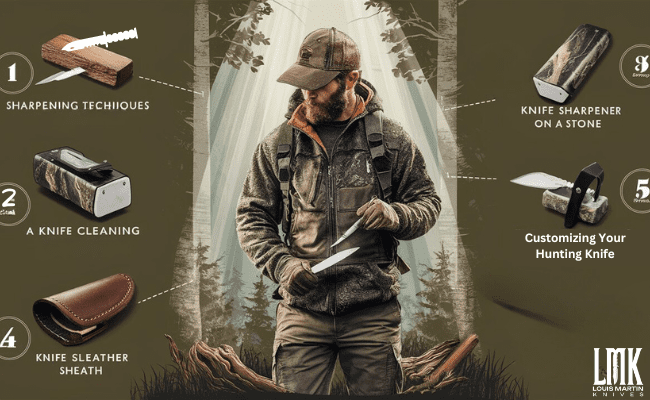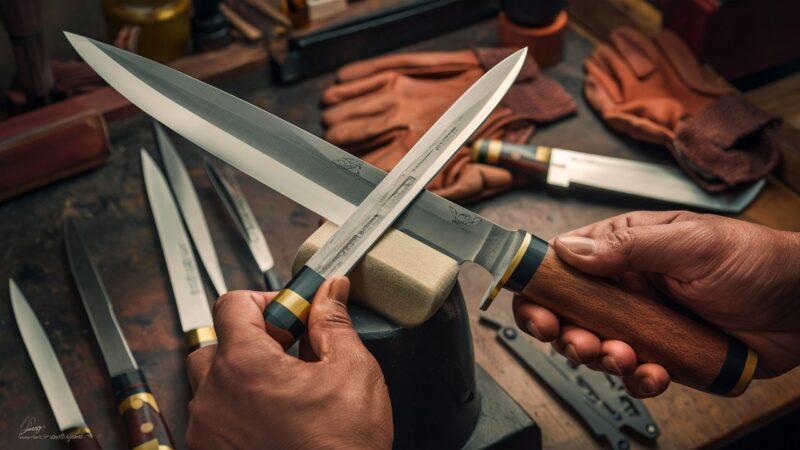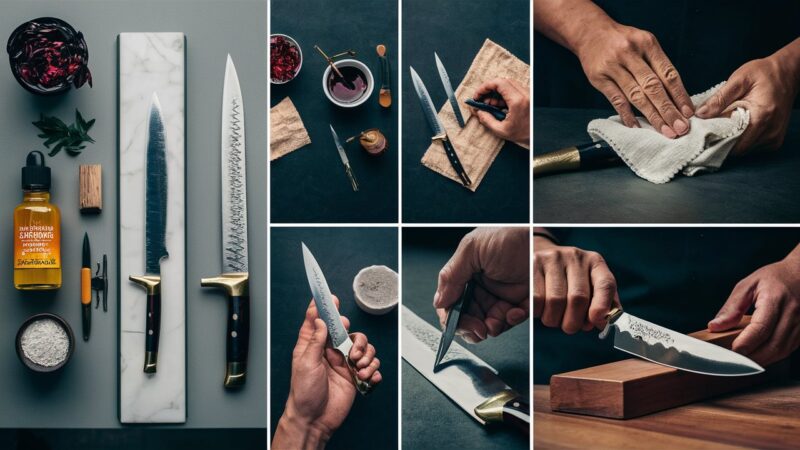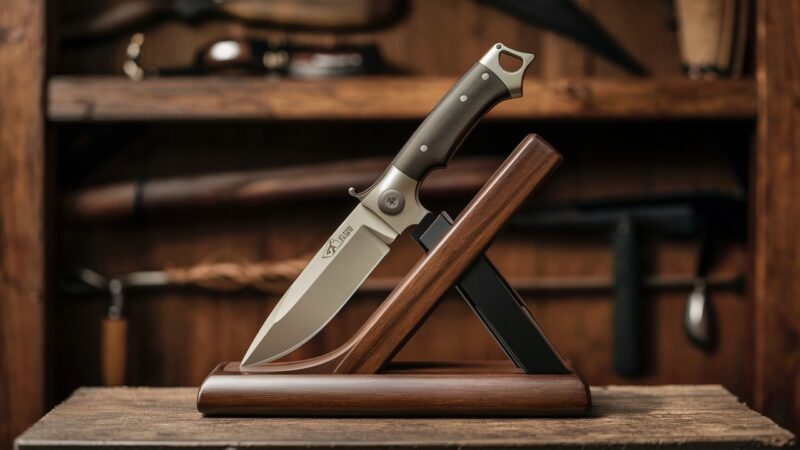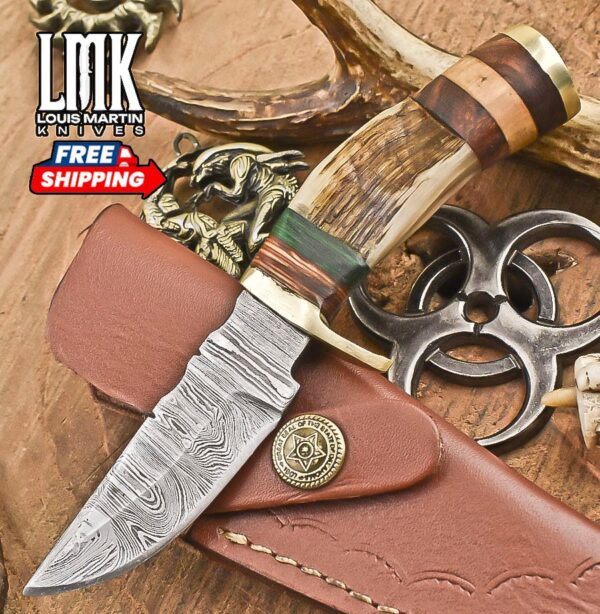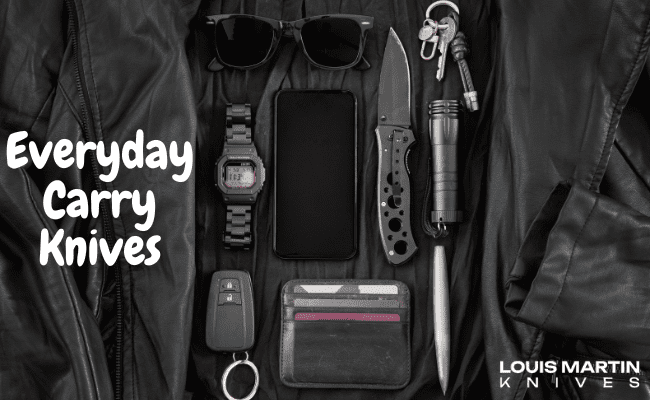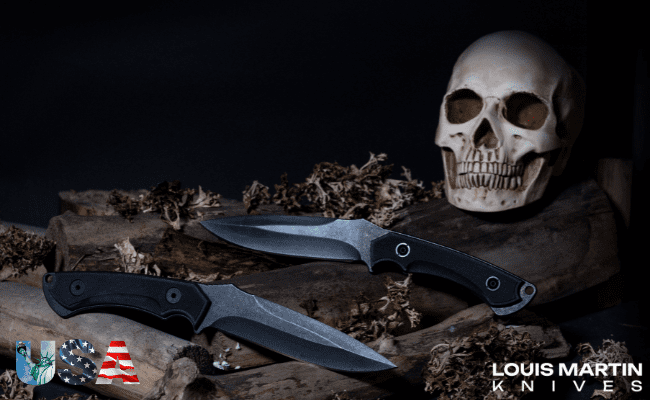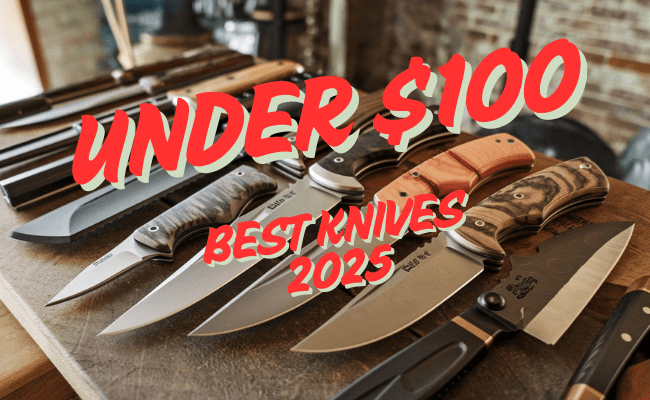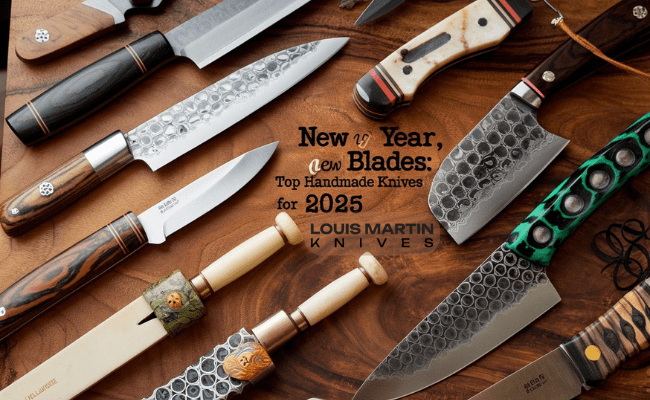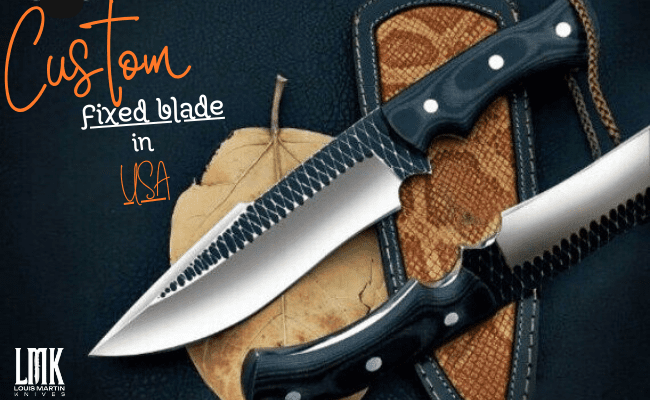A hunting knife is more than just a tool—it’s a crucial part of every outdoor enthusiast’s gear. Whether you’re an experienced hunter or just starting, mastering your hunting knife can significantly impact your outdoor adventures. A hunting knife is an essential tool for any outdoor enthusiast, crucial for tasks from field dressing to preparing meals. This guide aims to provide five essential hacks for mastering your hunting knife use and maintenance, ensuring it’s always ready for action. Elevate your skills and make your custom knives perform at their best.
Hack 1: Proper Sharpening Techniques
A sharp handmade hunting knife is the most efficient for hunting of course… A super dull knife can make tasks more difficult and dangerous, leading to accidents. On the other hand, a sharp blade ensures precision and ease, whether you’re field dressing a deer or slicing through thick ropes.
Choosing the Right Sharpening Tools
Before you begin sharpening, it’s essential to select the right tools. The most common options include whetstones, sharpening rods, and electric sharpeners. Whetstones are a favorite among professionals for their versatility and effectiveness.
How to Test the Sharpness of Your Knife
Testing your knife’s sharpness is simple. You can use the paper test: hold a piece of paper and try slicing through it with your knife. A sharp blade will cut cleanly without tearing. Another method is the thumbnail test, where you gently drag the blade across your thumbnail. If it grips slightly, it’s sharp enough.
Tips for Maintaining the Edge Between Sharpening Sessions
Regular maintenance is key to keeping your knife sharp. Use a honing rod to realign the edge after each use, and store your knife properly to avoid dulling.
Hack 2: Effective Cleaning and Maintenance
A clean hunting knife not only performs better but also lasts longer. And make them the best hunting knives Dirt, blood, and other residues can cause corrosion and dull the blade over time. Regular cleaning ensures your knife remains in optimal condition.
Materials Needed
- Soft cloth
- Mild detergent
- Oil (mineral oil or specialized knife oil)
Steps to Clean the Blade, Handle, and Sheath
- Blade: Rinse the blade with warm water to remove any debris. Use a soft cloth and mild detergent to clean the blade thoroughly.
- Handle: Depending on the material, clean the handle with a damp cloth. Wooden handles may require occasional oiling to prevent drying and cracking.
- Sheath: Clean the sheath with a damp cloth. If it’s leather, consider applying a leather conditioner to keep it supple.
How to Dry and Oil Your Knife to Prevent Rust and Corrosion?
After cleaning, dry your knife Apply a thin layer of oil to the blade and handle to protect against moisture and corrosion.
Regular Maintenance Schedule Recommendations
Establishing a regular cleaning routine is crucial. Clean your knife after each use and perform a thorough maintenance check every few months, especially if it’s been exposed to harsh conditions.
Hack 3: Safe Handling and Storage
Safety should always be a priority when handling and storing your hunting knife. Proper techniques prevent accidents and prolong the life of your knife.
Proper Grip Techniques
Always hold your knife with a firm grip, keeping your fingers away from the blade. This ensures control and precision during use.
Safe Passing Methods
When passing your knife to someone, always offer the handle first. This minimizes the risk of accidental cuts.
Hack 4: Customizing Your Hunting Knife
Customizing your hunting knife can enhance its functionality and make it uniquely yours
Handle Modifications
Changing the handle grip or adding wraps can improve comfort and control. Custom handles made from materials like wood, bone, or micarta add a personal touch.
Blade Alterations
Personalized engravings and coatings can make your knife stand out. Engravings can include your name, initials, or favorite symbols. Coatings like black oxide or titanium can improve durability and aesthetics.
Hack 5: Utilizing Your Knife for Multiple Purposes
A hunting knife is a versatile tool that You can do so much with it rather than only Hunting… Learning to use it for multiple purposes maximizes its value and utility.
Outdoor Survival Tasks
Your hunting knife in outdoors can be invaluable in survival situations. Use it to build shelters, start fires, and prepare food. Its robust design makes it suitable for these demanding tasks.
First Aid Applications
In emergencies, your hunting knife can be used to cut bandages, create splints, and perform other first aid tasks. It’s a critical tool for outdoors sometimes
Crafting
Your hunting knife can also be used for crafting and tool-making. Carve wooden tools, create traps, and perform other tasks that require precision cutting.
Conclusion
Mastering your wholesale hunting knife involves more than just owning a quality blade. By implementing these five essential hacks—proper sharpening techniques, effective cleaning and maintenance, safe handling and storage, customizing your knife, and utilizing it for multiple purposes—you can ensure your hunting knife remains a reliable companion in all your outdoor adventures.
FAQs
Q1: When should I sharpen my hunting knife?
A: The frequency of sharpening your hunting knife depends on how often you use it and the type of tasks you perform. Generally, it’s good practice to sharpen your knife after every few uses or whenever you notice a decline in its performance
Q2: Can I customize my hunting knife myself, or should I hire a professional?
A: You can certainly customize your hunting knife yourself, especially for simple modifications like adding a handle wrap or engraving. DIY customization can be a fun and rewarding project. However, for more complex alterations, such as changing the handle material or applying specialized coatings, it’s often best to hire a professional to ensure precision and quality.
Q3: What’s the best way to store my hunting knife to prevent damage and ensure safety?
A: The best way to store your hunting knife is in a sheath, as it protects the blade and prevents accidental cuts. Alternatively, you can use a knife block or a magnetic strip for easy access and safe storage. Avoid storing your knife loosely in a drawer, as this can lead to damage and pose a safety risk.
